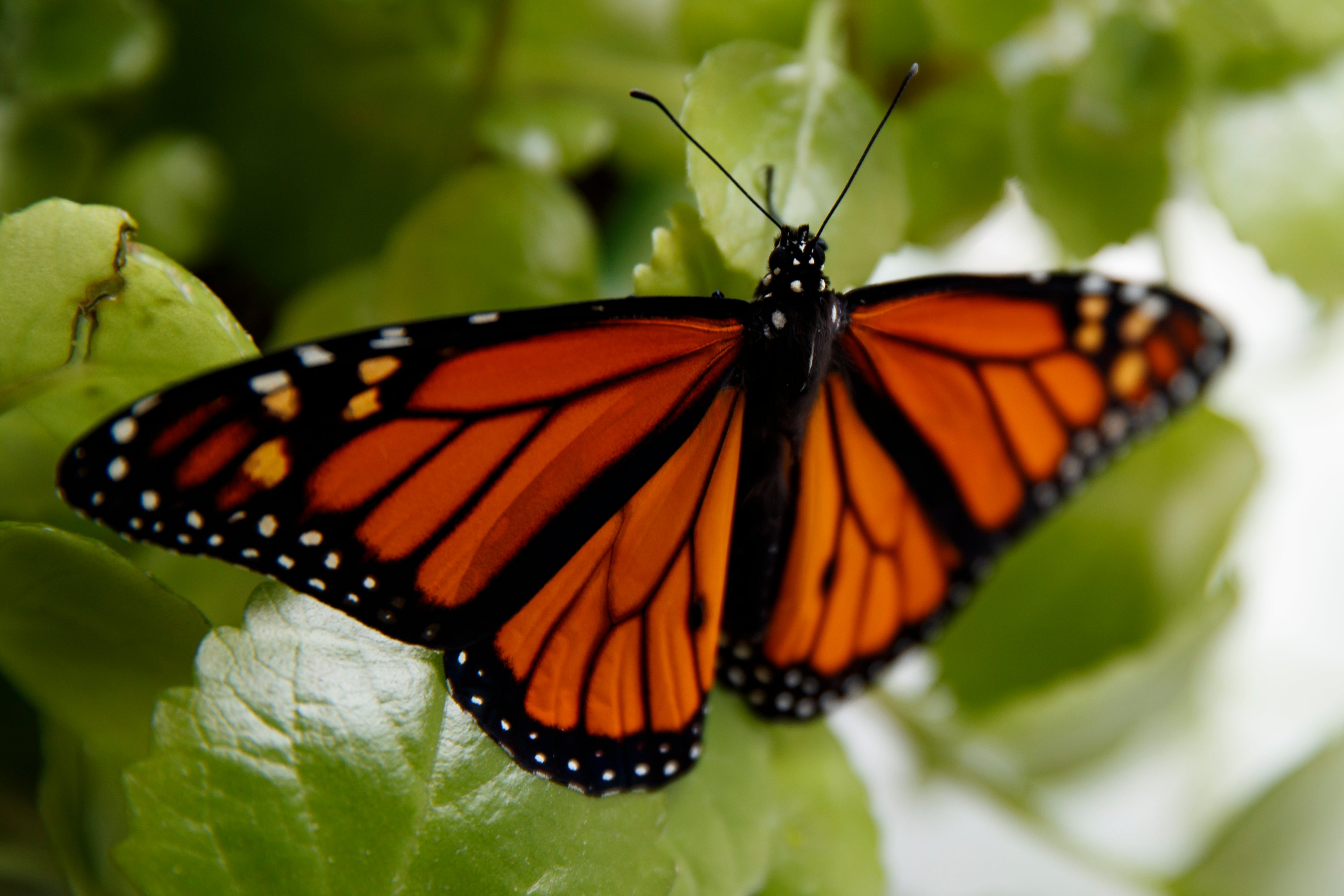Feds to delay seeking legal protection for monarch butterfly
The monarch butterfly will have to wait longer to receive protection under the Endangered Species Act

Your support helps us to tell the story
From reproductive rights to climate change to Big Tech, The Independent is on the ground when the story is developing. Whether it's investigating the financials of Elon Musk's pro-Trump PAC or producing our latest documentary, 'The A Word', which shines a light on the American women fighting for reproductive rights, we know how important it is to parse out the facts from the messaging.
At such a critical moment in US history, we need reporters on the ground. Your donation allows us to keep sending journalists to speak to both sides of the story.
The Independent is trusted by Americans across the entire political spectrum. And unlike many other quality news outlets, we choose not to lock Americans out of our reporting and analysis with paywalls. We believe quality journalism should be available to everyone, paid for by those who can afford it.
Your support makes all the difference.The monarch butterfly will have to wait several years more to receive protection under the Endangered Species Act despite its declining population.
The U.S. Fish and Wildlife Service will consider the black-and-orange butterfly, once a common sight in backyard gardens, meadows and other landscapes, a “candidate” for designation as threatened or endangered, officials told The Associated Press ahead of an official announcement Tuesday. But there are other species in line ahead of it.
The monarch s status will be reviewed annually, said Charlie Wooley, head of the agency's Great Lakes regional office. Emergency action could be taken earlier, but plans now call for proposing to list the monarch in 2024 unless its situation improves enough to make the step unnecessary.
The proposal would be followed by another year for public comment and development of a final rule.
Scientists estimate the monarch population in the eastern U.S. has fallen about 80% since the mid-1990s, while the drop-off in the western U.S. has been even steeper.
“We conducted an intensive, thorough review using a rigorous, transparent science-based process and found that the monarch meets listing criteria under the Endangered Species Act," Fish and Wildlife Service Director Aurelia Skipwith said in a statement. "However, before we can propose listing, we must focus resources on our higher-priority listing actions.”
The delay will enable scientists to continue monitoring the butterfly's numbers and the effectiveness of what Wooley described as perhaps the most widespread grassroots campaign ever waged to save an imperiled animal.
Since 2014, when environmental groups petitioned to list the monarch, school groups, garden clubs, government agencies and others around the nation have restored about 5.6 million acres (nearly 2.3 million hectares) of milkweed plants on which monarchs depend, Wooley said. They lay eggs on the leaves, which caterpillars eat, while adults gather nectar from the flowers.
The volunteer effort “has been phenomenal to see," he said. “It has made a difference in the long-term survival of monarchs and helped other pollinators that are potentially in trouble.”
But advocacy groups say it has compensated for only a small fraction of the estimated 165 million acres (67 million hectares) of monarch habitat — an area the size of Texas — lost in the past 20 years to development or herbicide applications in cropland.
“Monarchs are too important for us to just plant flowers on roadsides and hope for the best,” said Tierra Curry, a senior scientist at the Center for Biological Diversity. “They need the comprehensive protection that comes only from the Endangered Species Act, which would save them and so many other beleaguered pollinators that share their habitat.”
The monarch's plight is part of what the United Nations describes as a worldwide crisis threatening 1 million species — one of every eight on Earth — with extinction because of climate change, development and pollution.
Even so, the Trump administration has listed only 25 species — fewer than any since the act took effect in 1973. The Obama administration added 360.
Trump's team also has weakened protections for endangered and threatened species in its push for deregulation. Among other changes, it limited consideration of climate change's effects on animals when evaluating whether they should be protected.
Global warming is one of the biggest dangers to the monarch. It contributes to lengthening droughts and worsening storms that kill many during their annual migration.
About 90% of the world's monarchs live in North America. Scientists measure their abundance by the size of the areas they occupy in Mexico and California, where they cluster during winter after flying thousands of miles from as far away as Canada.
The Fish and Wildlife Service estimates the larger eastern population declined from about 384 million in 1996 to a low of 14 million in 2013 before rebounding somewhat, reaching about 60 million last year.
But the California-based western group dropped from about 1.2 million in 1997 to fewer than 30,000 in 2019, with preliminary survey results this year showing another steep drop.
While such grim prospects qualify the monarch for listing, the Fish and Wildlife Service said the law allows delays when the agency has limited resources and must focus on higher-priority cases under consideration.
Species ahead in line might be worse off, or courts might have set deadlines for decisions on them.
The Great Lakes office, which is handling the monarch case, is considering nine others with higher- priority status. They include the little brown bat, the plains spotted skunk, the Illinois chorus frog, the golden-winged warbler, Blanding's turtle, the Mammoth Springs crayfish, two freshwater mussels and a plant called Hall's bulrush.
___
Associated Press writer Ellen Knickmeyer contributed to this story from Oklahoma City.